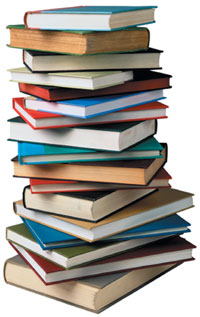 In this post, I wrote about the new law in the US that required, after Feb 10, 2009, that all children’s products sold in the US must be certified they meet specific lead levels. As written, the law includes books, and is retroactive, so existing and used books would also need to be tested and certified. There was lots of confusion and concern from libraries, thrift stores, publishers and non-profits about how exactly the law effects them (would libraries need to close their childrens’ rooms?)
In this post, I wrote about the new law in the US that required, after Feb 10, 2009, that all children’s products sold in the US must be certified they meet specific lead levels. As written, the law includes books, and is retroactive, so existing and used books would also need to be tested and certified. There was lots of confusion and concern from libraries, thrift stores, publishers and non-profits about how exactly the law effects them (would libraries need to close their childrens’ rooms?)
![]() Since I wrote that post, the Consumer Product Safety Commission (CPSC, which administers the law) has said they would “not impose penalties against anyone for making, importing, distributing or selling” a list of specified products, including “an ordinary children’s book printed after 1985.” That’s good news for me — my flip books are new. However most libraries have lots of books printed before 1985 in their children’s section and it’s not unusual for small independent booksellers to have old children’s books as well. In the extreme, there are reports on Etsy of thrift stores just throwing away their older children’s books. Publishers and booksellers submitted enough evidence to convince the CPSC that “ordinary children’s books” printed before 1985 don’t contain lead, and I hope they are able to further persuade them to exempt pre-1985 too — it would be a shame not to be able to buy children’s books that are now out of print.
Since I wrote that post, the Consumer Product Safety Commission (CPSC, which administers the law) has said they would “not impose penalties against anyone for making, importing, distributing or selling” a list of specified products, including “an ordinary children’s book printed after 1985.” That’s good news for me — my flip books are new. However most libraries have lots of books printed before 1985 in their children’s section and it’s not unusual for small independent booksellers to have old children’s books as well. In the extreme, there are reports on Etsy of thrift stores just throwing away their older children’s books. Publishers and booksellers submitted enough evidence to convince the CPSC that “ordinary children’s books” printed before 1985 don’t contain lead, and I hope they are able to further persuade them to exempt pre-1985 too — it would be a shame not to be able to buy children’s books that are now out of print.

Isn’t it possible to just declare those vintage children’s books as “not suitable for children”? Wouldn’t that suffice to correspond to these legal requirements? As I see it, it’s mostly “grown-up children” anyway that try to get back those books dear to their hearts.
I think you will enjoy reading this!
Dr. Seuss Meets the CPSIA –
http://www.easyfunschool.com/the_CPSIA_meets_Dr_Seuss.html